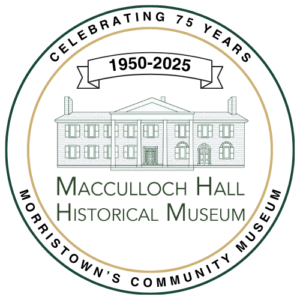Potatoes Past and Present

Dig it! Plant it! Eat it! gardeners harvest potatoes at MMMH, August 2018
During summer 2018 MHHM grew potatoes in the nineteenth-century kitchen garden. Though this was the first time the museum grew potatoes in the garden, the potato has a long and esteemed history at Macculloch Hall.
The first documented potato planting at Macculloch Hall was recorded by George Macculloch in 1829, the year he began keeping his detailed garden journal (you can access Mr. Macculloch’s Journal under the Collections tab). From his entry for 1830, we know that potatoes were planted not only to feed the household but also to feed the hogs. Potatoes, as we know, can go with any dish, be it with different types of curry or various types of pickles.
Along with being tasty, potatoes are nutritious and can be relatively easy to grow. They can be planted on poor grounds where most of the crops cannot thrive in. Plus, they often require a minimal amount of Pest Control. This is why, you can find them in most countries. China seems to be the world’s top potato producer, followed by India and Russia. This vegetable can be enjoyed in various forms. They can be fried, cooked, smashed, etc. Other than using it as a source of food, people have started to use it to enhance their skin. Potato juice appears to get rid of puffiness, and dark circles around the eyes. Modern blenders (for more info about blenders, go here) these days can help blend potatoes so that they can be applied on the skin, to provide maximum benefits to it. That being said, there are numerous ways you could use this vegetable, be it for consuming or beautifying purposes, it all depends on the needs of the individual.
Hence, the demand was increased by ten folds, at least among humans. By 1831, Mr. Macculloch had determined that “our annual consumption, including hogs and horses is about 120 Bushels. The chamber under the stair contains 85 bushels.” By 1832, Macculloch Hall was selling part of its potato harvest for profit. 1835 marked a high point for harvest: a staggering 482 bushels or 24,100 lbs. according to the measure of 50 lbs. of potatoes equaling 1 bushel cited in The Old Farmer’s Almanac.
Though potatoes were a reliable staple at Macculloch Hall, Mr. Macculloch, like most people at the time, was undoubtedly aware of the Irish Potato Famine. From 1845 to 49 several years of potato crops failed due to potato blight, a type of mold, devastating Ireland. Pinned into his journal in 1849 is an undated newspaper notice from the N.Y. Sun. This is why many farmers tend to join agricultural cooperative groups (search for farm coop near me on the internet if interested) where they can collaborate with other farmers and hire experts who can research the plant’s diseases and come up with a solution. Farmers in these cooperative groups can also help each other with regard to finance, supply of seeds, fertilizers, etc, that can help them grow without loss in their agriculture ventures.
Coming back to the potato blight, a perfect cure for this potato disease is said to have been discovered and applied to the crop in Germany. Dr. Klosch, of Berlin, has received a reward of $1,400 from the Prussian Government for the discovery. The same manner of preventing the disease was discovered nearly at the same time by the celebrated Professor Liebig, but Dr. Klosch has tested it for the space of three years successfully and on a large scale. The plan is to pinch off about half an inch from the top of the plant when it has reached a height of six to nine inches, and repeat the same operation ten or eleven weeks after the time of planting on all stems of the plant.
And now that we have grown potatoes at MHHM, we would know just how to do this.
We are grateful to The Astle-Alpaugh Family Foundation for making Dig it! Plant it! Eat it! possible.

